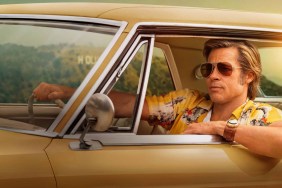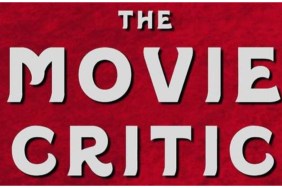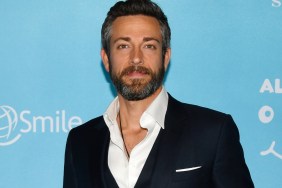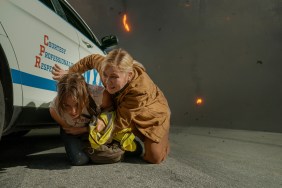
No matter what anyone says about David Ayer‘s Fury, one complaint won’t be to disparage its intensity. This is one bloody, dirty, violently loud and fierce movie that holds very little back. In that sense it deserves the audience’s respect for not sugar-coating the horrors or war even if it loses its way a little thematically.
Set during the tail end of World War II, we meet Don ‘Wardaddy’ Collier (Brad Pitt), commander of the five-man Sherman tank crew codenamed “Fury” as they move from one strategic town to the next, killing any enemy in their way and trying to keep their wits about them as they do it, or whatever wits they may have left.
As the movie begins, they are the only tank crew to have survived a most recent fight and even though they lost their machine gunner/co-driver, his memory remains in the form of his blood and half his face still inside the 34 ton steel beast they call home. Norman Ellison (Logan Lerman) — after only weeks in the Army and trained to be a typist, is told to clean up the inside of the tank as he is now Fury’s newest member.
Norman, joining this battle-hardened bunch, essentially becomes the eyes through which the audience experiences the rest of the film and it isn’t long before his mettle is tested. Asked to cut down the enemy or risk the lives of the men he’s fighting alongside, Norman would just as soon be killed than kill another man. This is a character in which Ayer hasn’t given himself too many outs when it comes to Norman’s story arc. While the film does run a little over two hours long, it doesn’t leave much room for character building other than what you can glean from actions of the men in battle or the downtime in-between. As a member of the audience you simply need to ask yourself how long you believe it would take for a young man to go from being a suicidal softy that would rather die to a soldier more than willing to kill. Ayer does his best to give reason for Norman’s transformation, though I’m sure it won’t be enough for most.
Lerman, however, is a good choice for the role. Wide-eyed and mouth agape, I challenge anyone else to see what Norman sees and not be instantly shocked into incoherence. Perhaps what’s most sickening to understand is something Wardaddy says as a statement rather than a question after Norman chalks up his first kill, “Easy, isn’t it.” As a member of the audience, while you’re sitting back yelling at the screen for Norman to just suck it up and shoot his gun, just ask yourself how easy you think it might be to take another person’s life. Perhaps then you’ll realize Norman’s transformation isn’t as quick as you may have otherwise believed.
Norman, however, is the youngest duckling in a group of ugly ducks. Pitt as Wardaddy is something of a father figure to this bunch, carrying a sense of responsibility to keep these men alive. But as much as Pitt’s name above the title suggests he’s the leading man of this film, and he essentially is, as a character he’s just one piece of the machinery. As a leading man, Pitt has the ability to blend in with his co-stars and not necessarily stand out with an “all eyes on me” persona. Wardaddy may have the commanding voice in this crew, but the men that surround him are every bit as present and a part of this movie as he is.
Along with Wardaddy and Norman, the Fury crew includes Boyd Swan (Shia LaBeouf), the gunner; Grady Travis (Jon Bernthal), the loader; and Trini Garcia (Michael Pena), the driver. Each stands out in their own way, but LaBeouf and Bernthal are given far more to do than Pena and both are great, LaBeouf for his subtlety and Bernthal for his animalistic, rage-filled, psychologically scarred behavior.
Couple these performances with the intense, close-combat battle sequences as the sound of gun fire fills the theater and tracer rounds light up the screen, and you have the reason Fury largely works. Ayer, however, has written a couple problem spots, one smack dab in the middle of the film and then there’s that ending.
In the middle of the movie, there’s a scene in which Norman and Wardaddy experience a moment of domesticity with a couple of German women (Anamaria Marinca and Alicia von Rittberg). The scene serves its purpose in exploring the absurdity or war, expanding on Pitt’s character’s history and speeding up Norman’s character arc, but it just goes on way too long. Then we come to the ending, a big action set piece that is both harrowing as well as a bit contradictory to the film’s theme, or at least Norman’s character’s theme as I understood it.
Norman is a character that originally (and understandably) rejects the idea of killing and he becomes a character willing to sacrifice himself alongside the fellow members of his tank crew. His character arc, as I understood it was to help explain how the fellow members of the Fury crew got to be they way they are when we first meet them — scarred and beaten down by war, turned into something that physically resembles a human, but now morally questionable as such. Yet, come the end of the film there’s a scene with a character and a flashlight (I won’t say any more so I don’t spoil anything) that sort of contradicts that character arc and, in a lot of ways, Ayer’s entire portrayal of the war and the hardened soldiers fighting it.
For these reasons it’s tough to say Fury is operating on anything more than testosterone, but I admit I don’t mind that. Ayer may throw in a few lines such as Wardaddy’s, “Ideals are peaceful, history is violent,” but he doesn’t turn the movie into grand soliloquies. These characters aren’t about that, these guys have been beaten down, and they are men of few words, given over to battle for so long their mantra is “the best job I ever had”.
Fury is just as much a horror film as it is anything else and Steven Price‘s score sells this as much as the stinking, dirty production design. As a severe piece of action-driven cinema with outstanding performances, it’s a movie that works, just don’t try and look too deep into its meaning.









